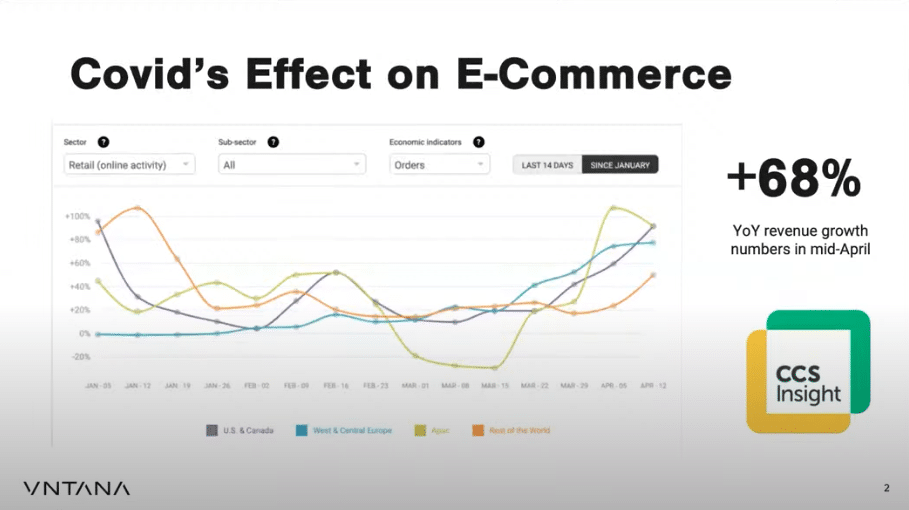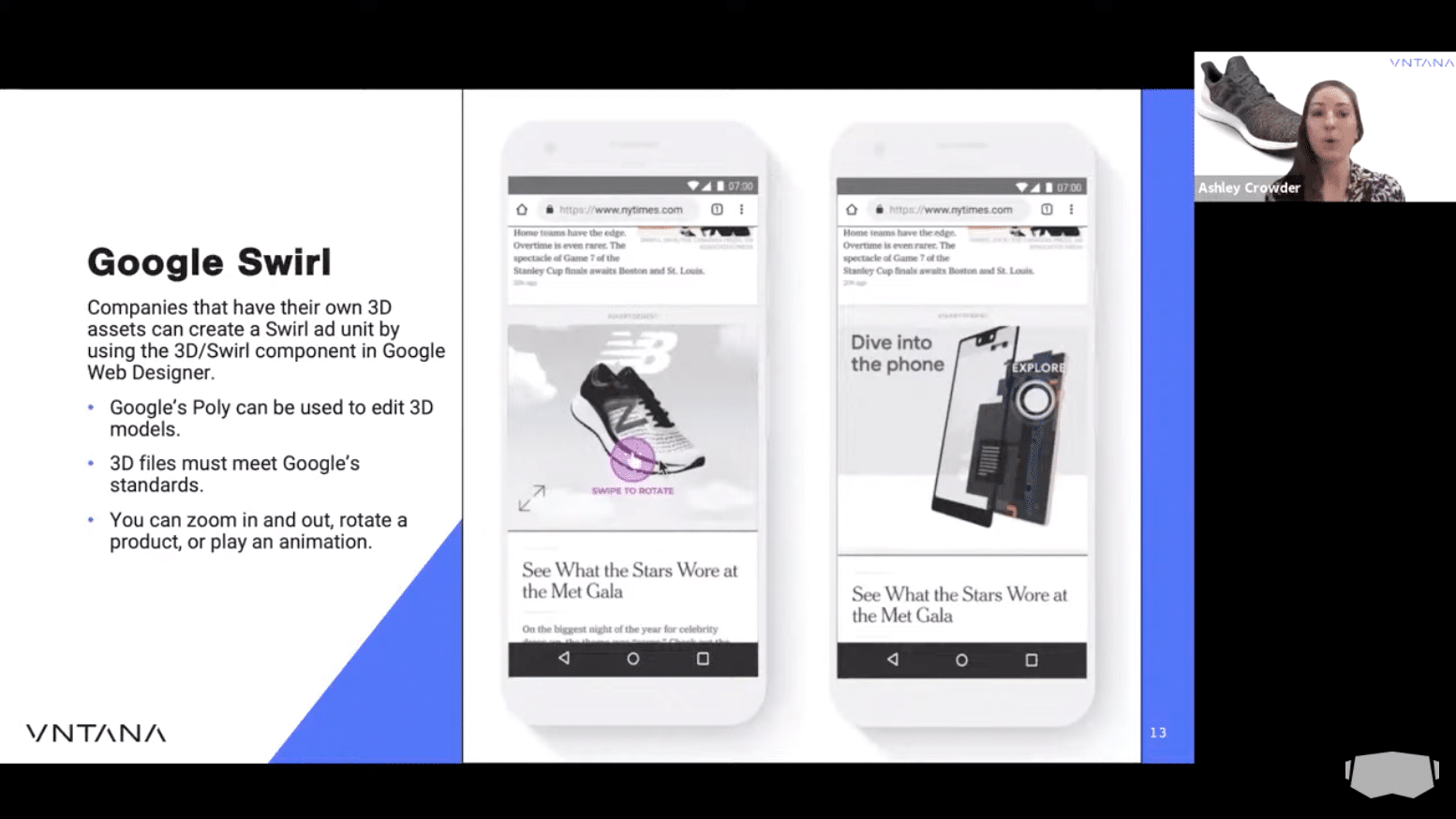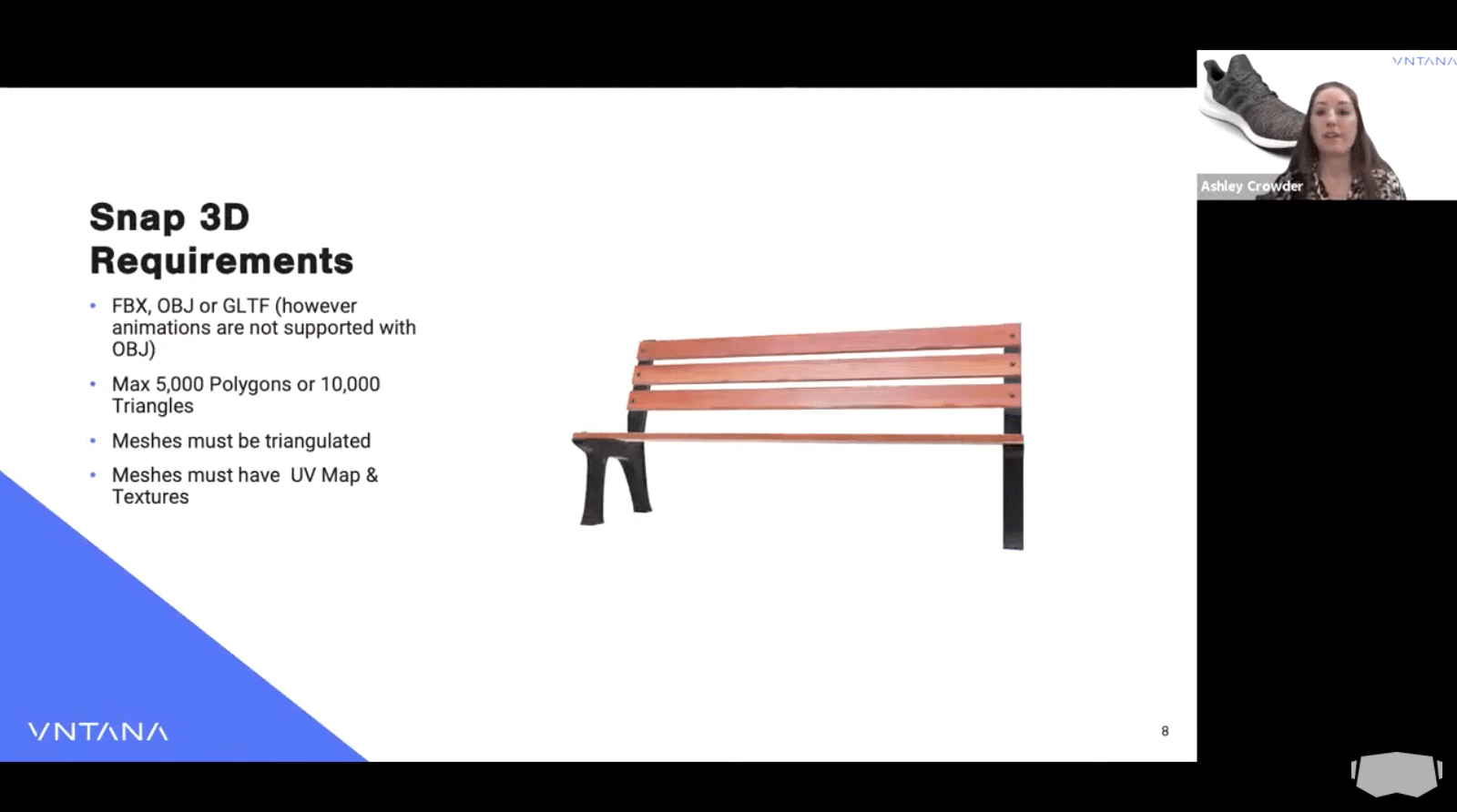
XR Talks is a series that features the best presentations and educational videos from the XR universe. It includes embedded video, narrative analysis and top takeaways. Speakers’ opinions are their own. For a full library of indexed and educational media, subscribe to ARtillery PRO.
Ecommerce spending is up significantly in Q2. That’s not a new notion, given well-known Covid-era shopping constraints. But it’s less certain if levels will sustain. Like other areas of digital transformation, will new habits and discoveries form during this period that are semi-permanent?
VNTANA co-founder & CEO Ashley Crowder thinks so. As she examined in her recent VR/AR Summit talk (video below), this is a strong signal for the long-term growth of eCommerce.
“eCommerce sales were up by 68 percent in mid-April. And what’s interesting is it’s expected to stay there; because once consumers are comfortable making purchases from home, they don’t want to give up that convenience — particularly for industries like furniture apparel, shoes and toys.”
An important offshoot of this trend involves AR Commerce. Because it lets shoppers visualize products in 3D, it combines the best of eCommerce (unlimited aisles, price competition, etc.), with some of the dimensional-advantages and informed-purchases of physical retail shopping.
“If you’re a business, you need to be improving your e-commerce site. And one way to do that is with 3D: having a 3d version of your products on your website. It has proven to double conversion rates and reduce returns by 40 percent. That is massive to the bottom line. Companies like IKEA that have implemented this early saw a 30 percent revenue increase.”

The How
The above addresses the “why?” of AR commerce — a fairly common message these days. But less common is concrete tactics that get into the “how.” In that spirit, Crowder provides a sort of public service announcement by walking through tactical considerations and platform choices.
A key underlying factor here is that the barriers to entry have significantly lowered. To get into AR commerce doesn’t require the developer skills it once did. This is due to standardized platforms to create or distribute (or both in some cases) 3D products that consumers can visualize in AR.
Starting with the consumer AR leader, Snap has been the poster child in lowering these AR commerce barriers for consumer brands, and even smaller companies. Its Lens Studio platform lets anyone build 3D experiences for free — though amplified distribution costs money.
Lens Studio is usually known for its whimsical lenses as opposed to 3D products, but the latter is possible by uploading your own models, she says. Facebook’s Spark AR is similar, but both platforms have some constraints on 3D-model file sizes in order to ensure AR performance.
High-Intent Medium
As for distribution, Snapchat boasts more engagement on a per-user basis while Facebook can reach more overall users. This is particularly the case with Instagram which is increasingly gaining transactional features as it cultivates a shopping and product discovery use case.
In fact, Crowder reminds us that 50 percent of Instagram users discover new products on the app, while 200 million users visit at least one business profile per day. Combined with AR efforts that are just getting started, this makes Instagram a sleeping giant for AR commerce.
Speaking of AR sleeping giants, Google offers Swirl, which lets advertisers create 3D interactive ads. This is a good way to incorporate 3D commerce in the pervasive and high-intent medium that is search. In fact, Google announced this week the program is exiting beta and available globally.
“A lot of people don’t realize you can actually advertise in 3D on Google today with Google Swirl. Imagine scrolling through and seeing a 3D version of that New Balance shoe instead of text. You can’t actually use Google Poly to edit 3d models or you can import your own. And once it’s there, you can zoom in, zoom out, rotate products, play an animation, which all has been proven to increase engagement significantly.”

Cohesive 3D Strategy
Another route for AR advertising and commerce that’s gaining recognition is Unity in-game advertising. Its network reaches 1.7 billion people and is increasingly used for in-game interstitial ads that are AR-enabled. This will continue to develop as a platform to distribute AR product ads.
Last on the list of distribution platforms is native apps. These have better face and body tracking for advanced product try-ons such as shoes. But apps are more suited to established brands that already have an installed base of downloads, as getting users to commit to new apps is difficult.
Beyond distribution channels, 3D asset creation also involves lots of choices that Crowder outlines. Here, there’s still a bit of fragmentation in platforms and file formats, which will require some standardization to lower adoption friction. We need the “jpeg of 3D.” says Crowder.
3D model workflows and processing (which VNTANA does) is also a key step in the value chain to compress files and meet the size-requirements of the above distribution platforms while maintaining detail. Lastly, a big success factor will be organizational and cultural alignment.
“You need to have a cohesive 3D strategy to win. Oftentimes, companies are siloed and the design team is not talking to the marketing team, and they might hire an agency to rebuild 3D assets that already exist. You need to be communicating and have one 3D asset that’s leveraged across the value chain so that it goes from design to manufacturing; and it’s tied in with your ERP system that can track data on this asset no matter where it is, where it’s going, and what customers touch it.”
See the full presentation below.


